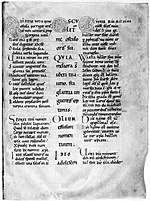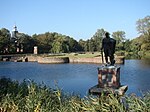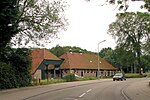Egmond Abbey
7th-century churchesBenedictine monasteries in the NetherlandsBergen, North HollandBuildings and structures in North HollandBurial sites of the House of Holland (nobility) ... and 2 more
Christian monasteries established in the 7th centuryMonasteries dissolved under the Dutch Reformation

Egmond Abbey or St. Adalbert's Abbey (Dutch: Abdij van Egmond, Sint-Adelbertabdij) is a Benedictine monastery of the Congregation of the Annunciation, situated in Egmond-Binnen, in the municipality of Bergen, in the Dutch province of North Holland. Founded in 920-925, and destroyed during the Reformation, it was re-founded in 1935 as the present Sint-Adelbertabdij, in the Diocese of Haarlem.
Excerpt from the Wikipedia article Egmond Abbey (License: CC BY-SA 3.0, Authors, Images).Egmond Abbey
Kloosterweg, Bergen
Geographical coordinates (GPS) Address Website Nearby Places Show on map
Geographical coordinates (GPS)
| Latitude | Longitude |
|---|---|
| N 52.595 ° | E 4.6602777777778 ° |
Address
Sint-Adelbertabdij (Abdij van Egmond)
Kloosterweg
1935 BJ Bergen
North Holland, Netherlands
Open on Google Maps








